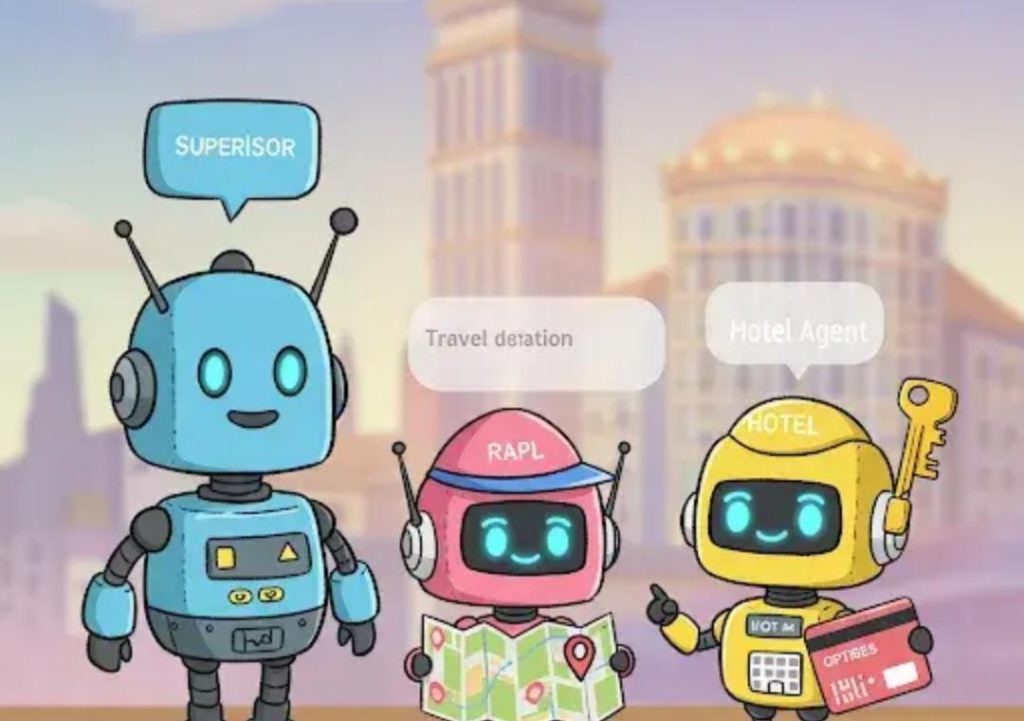
Multi-agent collaboration mimics real team dynamics
In the world of artificial intelligence, deploying a single AI agent to tackle a task is no longer the only option. With the rise of multi-agent systems, you can now deploy a team of AI agents that work together seamlessly to achieve complex goals. This modular setup allows different agents to specialise in specific tasks, communicate effectively, and collaborate to produce remarkable results.
In this blog post, we’ll explore the benefits of multi-agent collaboration, its applications, and how it can revolutionize the way we approach AI-powered tasks.
What are Multi-agent Systems?
A multi-agent system is a collection of autonomous AI agents that interact with each other to achieve a common goal. Each agent is designed to perform a specific task or set of tasks, and they communicate with each other to coordinate their efforts. This collaborative approach allows agents to share knowledge, expertise, and resources, leading to more efficient and effective task completion.
How does it work?
Imagine a team of AI agents working together to conduct research on a specific topic. One agent is responsible for gathering data, another for analyzing the data, and a third for validating the findings. Each agent has its own strengths and weaknesses, and they work together to produce a comprehensive report.
Here’s a breakdown of the process:
- Task assignment: Each agent is assigned a specific task, taking into account their strengths and weaknesses.
- Data sharing: Agents share data and knowledge to ensure they’re working with the most accurate and up-to-date information.
- Collaborative analysis: Agents analyze data and results together, identifying patterns, trends, and insights.
- Validation and reporting: Agents validate findings and produce a comprehensive report, incorporating their individual contributions.
Benefits of Multi-agent Collaboration
So, why is multi-agent collaboration a game-changer for AI applications? Here are some key benefits:
- Improved accuracy: By combining the strengths of multiple agents, you can achieve more accurate results than a single agent could ever achieve alone.
- Increased efficiency: Agents can work in parallel, reducing the time and resources required to complete a task.
- Scalability: Multi-agent systems can be easily scaled up or down to accommodate changing task requirements or varying workloads.
- Flexibility: Agents can be easily swapped or replaced if one becomes unavailable or inefficient.
- Innovative solutions: The combination of diverse perspectives and expertise can lead to innovative solutions that might not have been possible with a single agent.
Applications of Multi-agent Collaboration
Multi-agent collaboration is not limited to research or data analysis. Its applications are vast and varied, including:
- Recommendation systems: Multi-agent systems can be used to develop personalized recommendation systems for customers, taking into account their preferences, behavior, and preferences.
- Customer service: Agents can work together to provide 24/7 customer support, ensuring that customers receive timely and effective assistance.
- Supply chain management: Multi-agent systems can optimize supply chain operations, coordinating shipments, inventory management, and logistics.
- Healthcare: Agents can collaborate to analyze medical data, diagnose diseases, and develop personalized treatment plans.
Conclusion
In conclusion, multi-agent collaboration has the potential to revolutionize the way we approach AI-powered tasks. By deploying a team of AI agents that work together seamlessly, we can achieve complex goals more efficiently, accurately, and effectively.
As we continue to explore the potential of AI, it’s essential to recognize the value of multi-agent collaboration. By adopting this modular approach, we can create digital workflows that mirror human teamwork, but at machine speed and scale.






